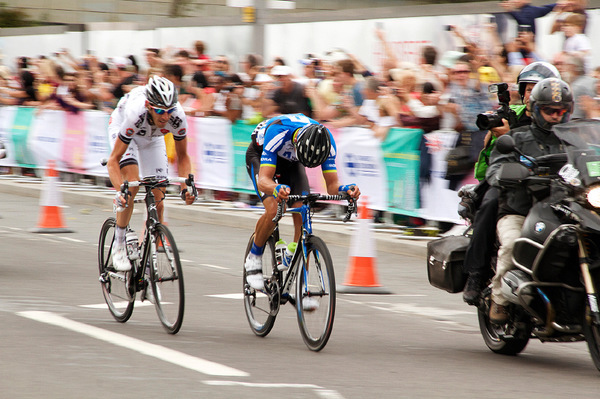If you’re a road cyclist, you know that VO2 max is one of the most important metrics to track. Simply put, VO2 max measures how much oxygen your body can utilize during exercise. The higher your VO2 max, the more endurance you’ll have on the bike. In other words, if you want to dominate on the road, you need to increase your VO2 max.
VO2 max is widely regarded as the best indicator of cardio-respiratory performance and plays a pivotal role in the success of every endurance athlete.
Runners, triathletes, rowers, swimmers, and, of course, cyclists should all spend time optimizing their VO2 max (also known as their maximal oxygen consumption), especially if they want to end up standing on the podium.
Athletes who perform at the crucial moments in their sports produce oxygen consumption that is extremely close to their VO2 max, and those with the highest VO2 max tend to win much more than others.
Increasing your VO2 max by too much is impossible, and possessing a large aerobic capacity is vital in all endurance sports. For example, in cycling, you spend most of the time using a lower percentage of your VO2 max.
But in those explosive moments – the sprints, the breakaways, and the punishing climbs – you will have to perform close to your VO2 max. Imagine if you could push 20 watts more at the decisive moments?
VO2 Max Intervals Deliver Fast Progress
I firmly believe that interval training with high intensity will boost your VO2 max.
The nearer the intensity is to 100% of VO2 max, the more your body and performance will benefit. The beauty of high-intensity training is that you can train less while improving your performance.
Elite riders should train at, or very close to, their VO2 max to achieve the level of progress they are seeking. Therefore, I always include VO2 intervals in training programs for professional riders. I also strongly recommend them to up-and-coming cyclists who are ambitious to further their progress.
The difficulty is that training at this intensity is extremely tough. Another issue is that riders should not expect to develop perfect pacing immediately during the first few VO2 intervals. It is a reasonably steep learning curve. Therefore, you should constantly assess and evaluate the effectiveness of intervals after the sessions so that you can make minor adjustments on your next training day.
Before you start VO2 intervals, I always recommend that it is advisable to perform a five-minute all-out test to gauge your average power output (in watts) at maximum oxygen consumption. The 5-minute test is reliable, and it can be done on a stationary bike or the road if you own a power meter. The crucial thing is you get a number for your average power output in the five-minute test.
VO2 Max Is So Time Effective
In my view, there is a common myth that training at threshold power is the optimum way to train. However, there is nothing magical about training strictly at threshold power. Remember that training a little above or below threshold power boosts performance almost the same way.
I think athletes should train close to their VO2 max because it helps them improve their VO2 max and threshold power. However, a combination of VO2 max and threshold power training can benefit ALL riders. They will achieve fantastic results using either threshold or VO2 intervals – or possibly a perfect blend of both.
When performed at the right intensity, VO2 intervals can positively impact your performance and be time-effective. Therefore, I believe that riders of all levels should include them in their sessions and become an integral part of training programs for elite and professional cyclists.
That’s why VO2 max training is a cornerstone in my time effective training principles used in my first e-book.

